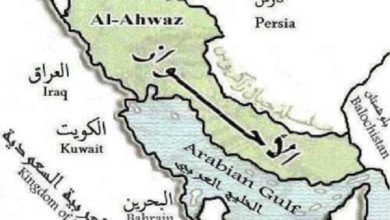
Scientific life in the Ahwaz region was distinguished during the three centuries (II, III and IV) Hijri (101-399/719-1008 CE) with tremendous giving in the field of thought and science of the quality of mentality and transmission. (17 AH/638 CE) and their association with the Holy Quran and the Sunnah of the Prophet, with distinct ideas and knowledge, have contributed greatly to the service of the entire Islamic Ummah and have become a major source of benefit for generations.
Dr. D. Abd al-Razzaq Khalaf al-Attiyah, in his book “Scientific Life in the Ahwaz Region during the Abbasid Era (719-1008 AD/101-399 AH),” is the scientific history and civilization of the Arab Ahwaz State during the Abbasid era.
The study included an introduction and five chapters, the first of which revolved around the most important scientific centers and places of education in the region of Al-Ahwaz, and the factors for the flourishing of scientific life in the region came the second chapter, and the third chapter was devoted to talking about legal sciences in the region of Al-Ahwaz, while the fourth chapter revolved around linguistic sciences In it, and on the humanities and natural sciences in the region of Al-Ahwaz came the fifth and final chapter, and the study was appended with a conclusion, and it was enriched with several appendices.
He points out that the great and active role in the growth and development of this scientific movement, with what it possessed of scholars, jurists, and professors who excelled in the sciences of the Holy Qur’an, interpretation and language, was taught by the people of Al-Ahwaz at their hands, and those minds were able to quote experimental sciences that preceded the emergence of Islam in the land of the Arabs, which he studied and looked at. Scholars and doctors of Jundishapur School in Ahwaz Province.
These sciences were present in the Greeks, preserved in their treasuries, including volumes and books containing treasures of science in medicine, philosophy, engineering, astronomy and mathematics. The scholars of this school embarked on the task of transferring and translating them from Greek into their Syriac and Arabic languages, and this would not have happened without the support and encouragement of the successors and their sponsorship of this movement. Which was called the “translation movement”, which actually began with the beginning of the three centuries, around which the subject of this research revolved.
Thus, in the Abbasid era, Al-Ahwaz had two types of knowledge, from which its children scooped up the delicacies of knowledge they desired: The first source: the sources of knowledge from the Greek heritage, to which was later added the Persian and Indian heritage, which were collected in the Jundishapur School in Al-Ahwaz, and it contains the sciences of medicine and philosophy and other actual science.
and the second fountain: schools of knowledge; It is the school of Basra, and it contains the legal and human sciences, so these two sources blended into one symbol to pour into the fortress of the Islamic scientific movement, but they were closer to the “School of Insight”, due to their eagerness to know the sciences of the new religion, and what it requires in terms of knowledge of the Arabic language and its grammar in which the Noble Qur’an was revealed. .




